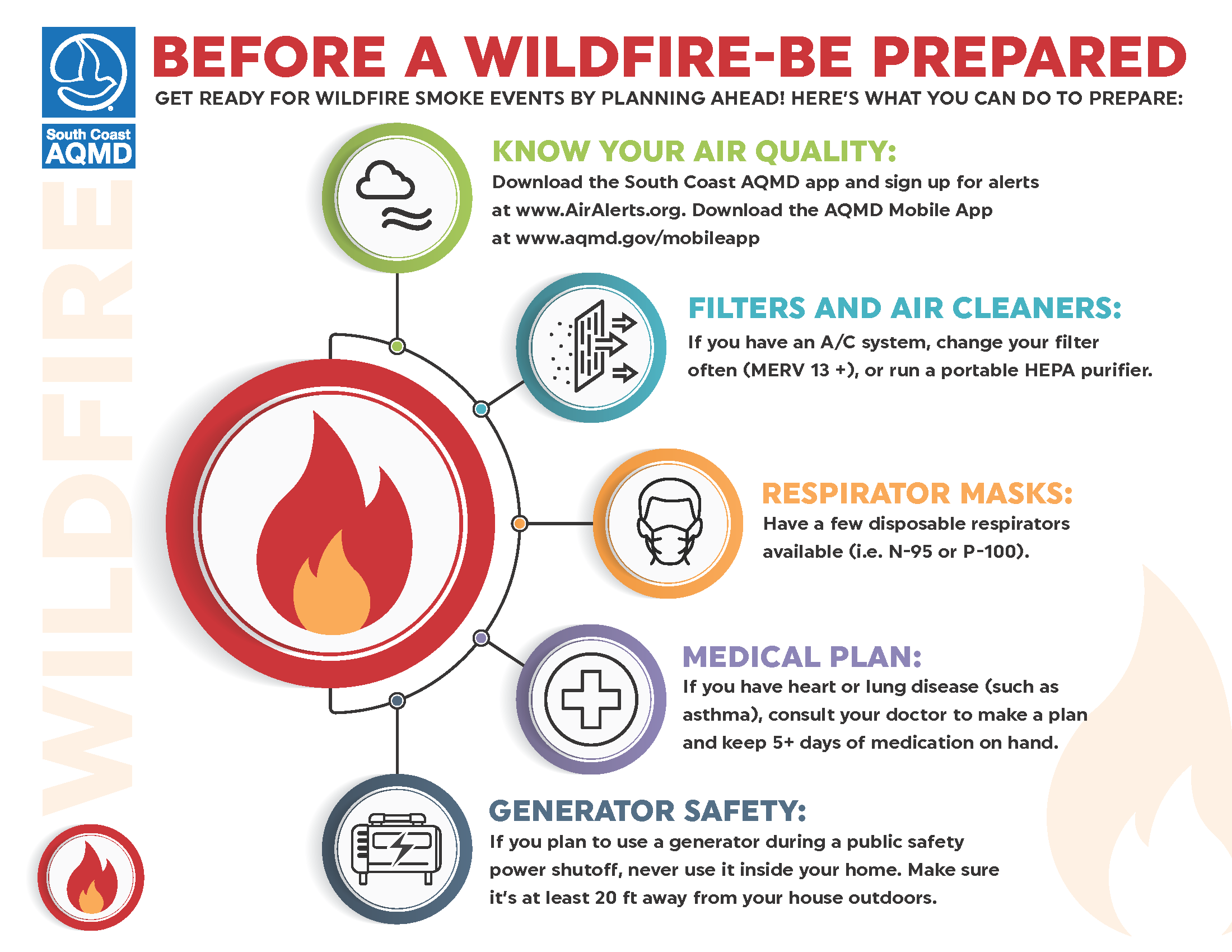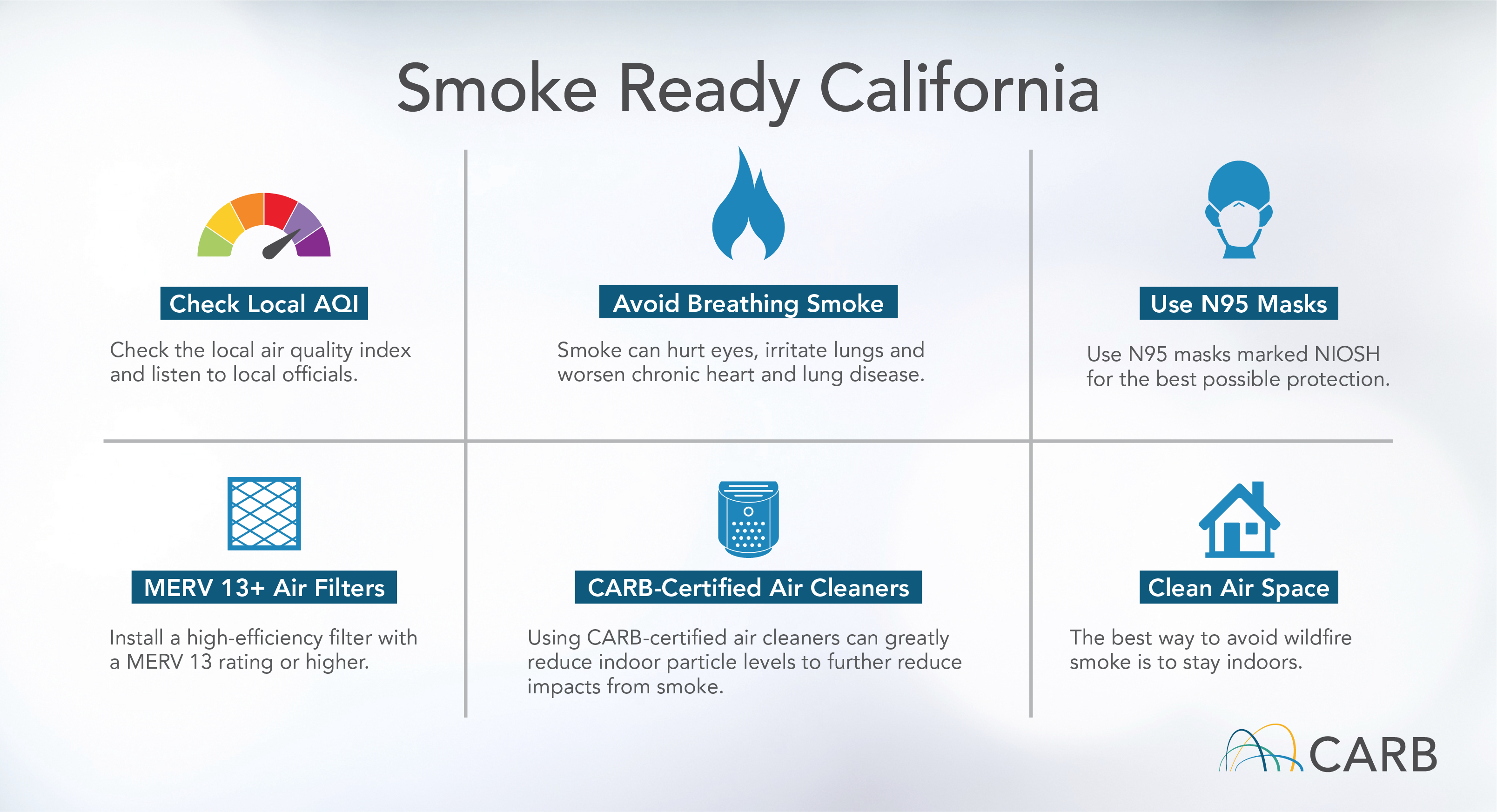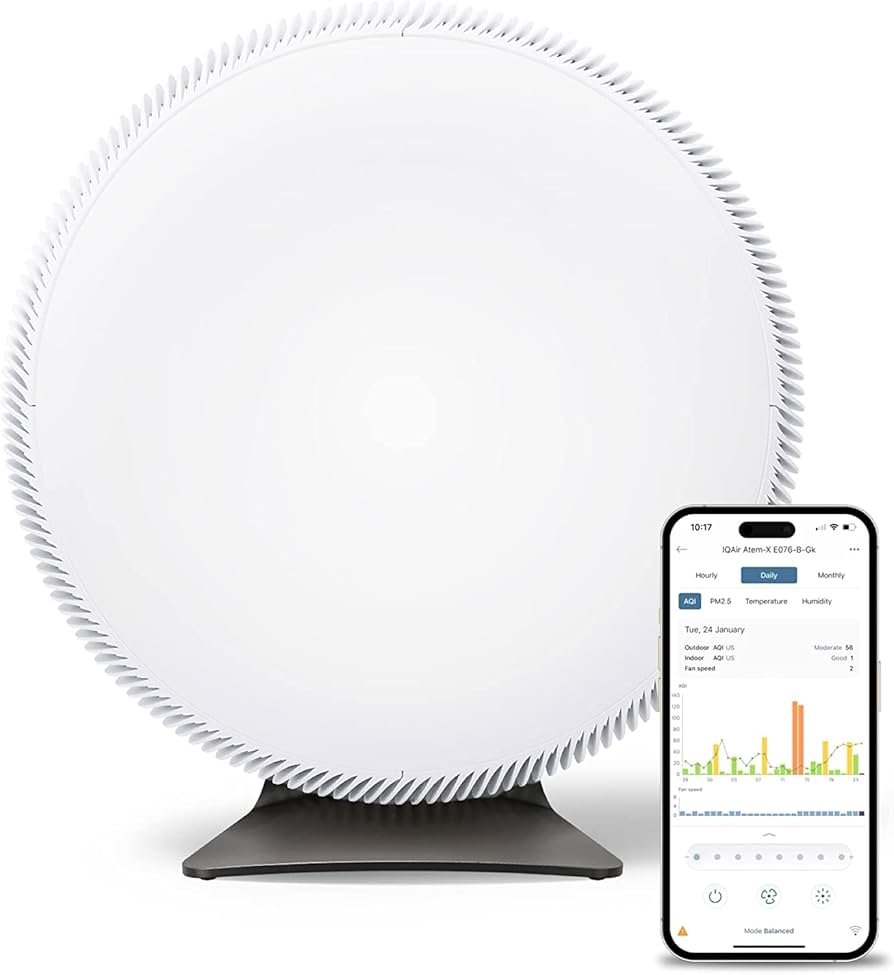Air purifiers filter the air, removing harmful particles. They help reduce wildfire smoke and alleviate asthma symptoms.
Wildfire smoke can cause severe health issues. The tiny particles in the smoke can irritate your lungs and worsen asthma. Air purifiers offer a solution. They trap and remove these harmful particles from the air. This makes the air safer to breathe.
Understanding how they work can help you choose the right one for your needs. In this blog post, we will explore the mechanisms behind air purifiers. We will also discuss their effectiveness against wildfire smoke and asthma. By the end, you will know how to improve your indoor air quality.
Introduction To Air Purifiers
Wildfire smoke and asthma can wreak havoc on our health. Air purifiers can help. They clean indoor air, removing harmful particles. This is especially crucial during wildfire season. Let’s dive into how these devices work.
Purpose And Benefits
Air purifiers aim to improve indoor air quality. They remove pollutants like smoke, dust, and allergens. This helps reduce asthma symptoms and other respiratory issues. Cleaner air means better health and comfort.
Types Of Air Purifiers
There are various types of air purifiers. Each has unique features and benefits. The most common types include:
- HEPA Filters: Capture 99.97% of particles. Effective against smoke and allergens.
- Activated Carbon Filters: Absorb odors and gases. Useful for wildfire smoke.
- UV Light Purifiers: Kill bacteria and viruses. Improve air hygiene.
- Ionic Purifiers: Use charged particles to clean the air. Reduce allergens and smoke.
Choosing the right purifier depends on your needs. Consider the size of your space and specific concerns like asthma or smoke.
Wildfire Smoke And Air Quality
Wildfire smoke can significantly degrade air quality. During wildfire season, smoke particles fill the air. These particles can travel hundreds of miles. This makes the air unhealthy to breathe. Poor air quality affects everyone, especially those with asthma.
Understanding the composition and health risks of wildfire smoke helps in managing its effects. Air purifiers play a crucial role here. They filter out harmful particles, making indoor air safer.
Composition Of Wildfire Smoke
Wildfire smoke is a mix of many particles and gases. It includes carbon monoxide, carbon dioxide, and water vapor. Tiny particles known as PM2.5 are also present. These are smaller than a grain of sand.
PM2.5 particles can easily enter the lungs. They pose a serious health risk. Wildfire smoke also contains volatile organic compounds (VOCs). These are harmful chemicals that can cause respiratory issues.
Health Risks Of Wildfire Smoke
Exposure to wildfire smoke is dangerous. It can lead to several health problems. People with asthma are at higher risk. Smoke can trigger asthma attacks. It can also cause coughing, shortness of breath, and chest pain.
Even healthy people can feel the effects. Long-term exposure can damage lung function. Children and the elderly are particularly vulnerable. Using an air purifier can help reduce these risks. It filters out harmful particles, making the air cleaner to breathe.
Impact Of Wildfire Smoke On Asthma
Wildfire smoke contains harmful particles and gases. These can worsen asthma symptoms. People with asthma are more sensitive to air quality. Smoke from wildfires can travel long distances. It affects air quality even far from the fire.
Asthma Triggers In Smoke
Wildfire smoke has many asthma triggers. Fine particles are the main cause. These particles are small. They can enter the lungs easily. This leads to irritation and inflammation. Chemicals in smoke also trigger asthma. Carbon monoxide, methane, and volatile organic compounds are harmful. They can worsen asthma symptoms quickly.
Symptoms And Complications
Asthma symptoms can get worse with smoke exposure. People may feel shortness of breath. Coughing and wheezing are common. There can be chest tightness too. These symptoms can be severe. Asthma attacks may become more frequent. This can lead to complications.
Severe asthma attacks can be dangerous. They may require medical attention. Long-term exposure to smoke is harmful. It can cause chronic respiratory issues. Asthma patients need to be careful. They should monitor air quality. Using air purifiers can help reduce symptoms.

Credit: www.aqmd.gov
How Air Purifiers Filter Smoke
Wildfire smoke contains many harmful particles. These particles can worsen asthma symptoms. Air purifiers can help filter out these harmful particles. They use different filters to clean the air. Let’s explore how these filters work.
Hepa Filters
HEPA filters are very effective. They can capture 99.97% of particles. These particles can be as small as 0.3 microns. Smoke particles are often larger than this.
HEPA filters work by trapping these particles. The filter has many layers of fiber. Smoke particles get stuck in these fibers. This helps to clean the air.
Activated Carbon Filters
Activated carbon filters are also very effective. They can remove odors and gases. Smoke from wildfires has many toxic gases. These gases can cause health problems.
Activated carbon filters have a special surface. This surface can trap gases and odors. The gases stick to the carbon surface. This process is called adsorption.
Using both HEPA and activated carbon filters can be very effective. They can remove both particles and gases. This makes the air cleaner and safer to breathe.
Air Purifiers For Asthma Relief
Asthma can be a difficult condition to manage, especially with poor air quality. Wildfire smoke is a common trigger for asthma attacks. Air purifiers can help reduce asthma symptoms by improving indoor air quality. Let’s explore how they work.
Reducing Asthma Symptoms
Air purifiers filter out harmful particles from the air. These particles include dust, pollen, and smoke. Removing these particles can lessen asthma symptoms. Clean air helps people breathe easier.
- HEPA filters trap small particles that trigger asthma.
- Activated carbon filters remove smoke and odors.
- UV light technology kills bacteria and viruses.
Some air purifiers use multiple filtration methods. This combination offers better protection. These devices can be especially useful during wildfire season.
Improving Indoor Air Quality
Indoor air quality affects overall health. Poor air can cause breathing problems. Air purifiers help keep indoor air clean and fresh.
| Filter Type | Function |
|---|---|
| HEPA Filter | Captures tiny particles |
| Activated Carbon Filter | Neutralizes smoke and odors |
| UV Light | Eliminates bacteria and viruses |
Wildfire smoke can spread indoors. An air purifier can reduce smoke levels inside. This improvement in air quality can be crucial for asthma sufferers. Clean air is essential for a healthy home.
Choosing The Right Air Purifier
Choosing the right air purifier can make a huge difference in keeping your home safe from wildfire smoke and asthma triggers. The right device can help you breathe easier and stay healthier. But with so many options available, how do you choose the best one? Let’s dive into the key features to look for and some of the top brands and models.
Key Features To Consider
- HEPA Filters: These filters capture 99.97% of particles as small as 0.3 microns. Essential for removing smoke and allergens.
- Activated Carbon Filters: Great for eliminating odors and chemical fumes from wildfire smoke.
- CADR Rating: Clean Air Delivery Rate indicates how quickly the purifier cleans the air. Higher ratings mean faster and more efficient purification.
- Room Size Compatibility: Ensure the purifier is suitable for the size of your room. Check the manufacturer’s recommendations.
- Noise Levels: A quieter purifier can be less disruptive to your daily activities. Look for models with a noise level below 50 decibels.
- Energy Efficiency: Energy Star rated purifiers consume less power, saving you money on electricity bills.
Top Brands And Models
Several brands offer high-quality air purifiers that can handle wildfire smoke and asthma triggers effectively. Here are some top picks:
| Brand | Model | Key Features |
|---|---|---|
| Dyson | Pure Cool TP04 | HEPA filter, activated carbon, air multiplier technology |
| Honeywell | HPA300 | True HEPA filter, 465 sq. ft. coverage, Turbo Clean setting |
| Levoit | Core 300 | True HEPA filter, 360° air intake, quiet operation |
| Blueair | Blue Pure 211+ | HEPA filter, high CADR rating, energy efficient |
Choosing an air purifier with these features ensures cleaner, safer air in your home. Whether you are dealing with wildfire smoke or asthma, the right purifier can make a world of difference.
Maintenance And Care
Maintaining your air purifier is essential for effective performance. Proper care ensures your device works well against wildfire smoke and asthma. This section covers key aspects of maintenance and care.
Filter Replacement
Filters are the heart of your air purifier. They capture harmful particles from the air. Over time, these filters clog with dirt and debris. Regular replacement keeps your air purifier efficient. Check your device’s manual for the recommended filter change schedule. Some units have indicator lights. These lights alert you when it’s time to replace the filter. Always use the correct filter type for your model.
Regular Cleaning Tips
Cleaning your air purifier regularly is crucial. Dust and dirt can accumulate on the device’s exterior and interior parts. Unplug the unit before cleaning. Wipe the exterior with a damp cloth. Avoid using harsh chemicals. Clean the air intake and outlet vents. Use a vacuum or a soft brush. This helps maintain airflow and efficiency. Check and clean the pre-filter, if your device has one. A clean pre-filter extends the life of the main filter.

Credit: www.walmart.com
Additional Tips For Cleaner Air
Improving indoor air quality is crucial, especially during wildfire seasons. While air purifiers play a significant role in combating wildfire smoke and asthma, there are other effective methods to ensure cleaner air in your home. Here are some additional tips you can follow.
Ventilation Techniques
Proper ventilation can significantly reduce indoor air pollutants. Use these techniques to improve your home’s air quality:
- Open windows and doors: When the outside air quality is good, allow fresh air to circulate through your home.
- Exhaust fans: Use exhaust fans in the kitchen and bathroom to remove contaminants and moisture.
- Cross-ventilation: Create a cross-ventilation effect by opening windows on opposite sides of a room. This helps in removing stagnant air and introducing fresh air.
- Air ducts: Ensure your air ducts are clean. Dirty ducts can circulate pollutants and allergens.
Using Humidifiers
Humidifiers can add moisture to the air, which is beneficial for people with asthma and during wildfire smoke events. Here’s how to use them effectively:
- Maintain optimal humidity levels: Keep indoor humidity between 30-50%. This reduces the survival of viruses and dust mites.
- Use distilled water: Distilled water has fewer minerals, reducing the likelihood of bacteria and mold growth in the humidifier.
- Regular cleaning: Clean the humidifier regularly to prevent mold and bacteria buildup. Follow the manufacturer’s instructions for best practices.
- Monitor humidity levels: Use a hygrometer to monitor indoor humidity levels. This ensures the air is neither too dry nor too moist.
Following these tips, along with using air purifiers, can help create a healthier indoor environment. Protecting yourself and your loved ones from wildfire smoke and asthma triggers is essential for well-being.

Credit: ww2.arb.ca.gov
Frequently Asked Questions
How Do Air Purifiers Help With Wildfire Smoke?
Air purifiers remove harmful particles from the air. They capture smoke, ash, and other pollutants. This makes indoor air cleaner and safer to breathe.
Can Air Purifiers Alleviate Asthma Symptoms?
Yes, air purifiers can reduce asthma triggers. They filter out dust, pollen, and other irritants. This helps improve air quality and ease asthma symptoms.
What Type Of Filter Is Best For Wildfire Smoke?
HEPA filters are highly effective against wildfire smoke. They capture 99. 97% of particles. This includes smoke, ash, and other fine pollutants.
Do Air Purifiers Eliminate Odors From Wildfire Smoke?
Yes, many air purifiers remove odors. Activated carbon filters are especially effective. They absorb smoke smells and other unpleasant odors.
Conclusion
Air purifiers help fight wildfire smoke and asthma. They filter harmful particles. Clean air improves breathing and overall health. These devices can make a big difference. Choosing the right air purifier is crucial. Check features and efficiency. A good model removes smoke and allergens effectively.
Make your home a safe haven. Protect your loved ones from poor air quality. Invest in an air purifier for better health. Stay informed and breathe easier.
Rakib Sarwar is a Registered Pharmacist and a reputed health and wellness blogger. He has a great interest in Air purifiers.
